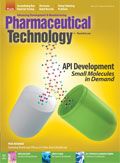Completing the Report Card
Pharma can boast of big-picture successes, but needs to work on operational issues.
A recent report from the Pharmaceutical Research and Manufacturers of America (PhRMA) lists impressive contributions of biopharma companies to patients, healthcare, and the economy. The report, 2015 Biopharmaceutical Research Industry Profile (1), indicates that in 2014, PhRMA member companies spent an estimated $51.2 billion in research and development, down slightly over the 2013 level of $51.6 billion. The estimates, gathered in a recent survey of PhRMA member companies represent “the majority of all biopharmaceutical spending-both public and private-in the United States,” PhRMA reports (1).
Other report statistics show:
- Biopharmaceutical companies on average invest as much as six times more in R&D-relative to sales-than the average US manufacturing firm.
- The pharma industry supports 3.4 million jobs in the United States, 810,000 through positions through direct employment.
- The overall impact of the sector on the domestic economy is $789 billion annually.
The report emphasized the value that the biopharmaceutical industry provides to patients and society; however, it failed to look at manufacturing-related shortcomings that can impact patient health. Prescription drugs, which represent only nine cents per 2013 healthcare dollar, “play a central role in improving the health outcomes of patients” when used appropriately, PhRMA reports, but limited access to medicines and complexity of treatment regimens, however, are barriers to the optimal use of medicines. Two other threats that limit patient access to drugs and pose health risks were not mentioned in the report: drug shortages and counterfeit drugs.
While the number of new drug shortages has dropped off since peaking in 2011, ongoing shortages persist. With a limited number of manufacturing lines available to produce generic drugs, especially injectable drugs, there is little margin for error.
Quality problems (40%) were the most-frequently cited cause for all drug shortages from January 2011 through June 2013, according to a US General Accountability Office report (2). Manufacturing delays and capacity issues involving shutdowns or slowdowns of facilities to perform maintenance or remediation were cited in another 30% of the drug-shortage cases. API-related problems contributed to 9% of the drug shortages. In addition, 12% of drug shortages were due to product discontinuation, a business decision.
Counterfeit medicines present another quality issue, both within and beyond US borders. According to the National Institutes of Health (NIH) “Poor quality medicines are a real and urgent threat that could undermine decades of successful efforts to combat HIV/AIDS, malaria, and tuberculosis” (3).
Implementation dates for serialization-the first step in track-and-trace efforts to reduce counterfeit and falsified medicines-are not far off, but many companies have been slow to take action, reported experts at a Pharmaceutical Technology seminar at INTERPHEX 2015 in mid-April.
FDA has actively addressed the drug shortage issue, promoting risk assessment, quality metrics, and facility and equipment improvements. Industry associations, including the Parenteral Drug Association and International Society of Pharmaceutical Engineers, have championed the cause of quality improvement. The wheels of change turn slowly, however, and are hampered by regulatory and operational hurdles, as well as business decisions to delay improvements.
Statistics can be presented to paint any performance picture. Patient safety, through drug quality and serialization efforts, need to be figured into the bottom line.
References
1. PhRMA, 2015 Biopharmaceutical Research Industry Profile (Washington, DC, 2015).
2. General Accountability Office, “Drug Shortages, Public Health Threat Continues, Despite Efforts to Help Ensure Product Availability” (Washington, DC, February 2014).
3. National Institutes of Health, “Global pandemic of fake medicines poses urgent risk, scientists say,” Press Release (Bethesda, MD, April 20, 2015).
Article Details
Pharmaceutical Technology
Vol. 39, Issue 4
Page: 12
Citation: When referring to this article, please cite as R. Peters, “Completing the Report Card,” Pharmaceutical Technology 39 (5) 2015.

PacBio Chosen as Tech Partner for Global Alzheimer’s Disease Research Project
April 23rd 2025The project, the North African Dementia Registry, will unite multiple entities for the purpose of developing a comprehensive dataset to advance the research community’s understanding of Alzheimer’s disease and other dementias in diverse populations.